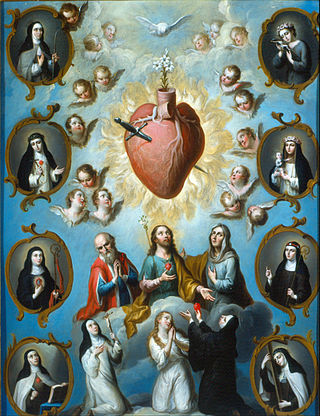
Y tu mamá también is a 2001 Mexican coming-of-age comedy drama road film directed by Alfonso Cuarón, who co-wrote the script with his brother Carlos. It follows two teenage boys who take a road trip with a woman in her late twenties and stars Diego Luna, Gael García Bernal, and Maribel Verdú, with narration by Daniel Giménez Cacho. It is set in 1999 against the backdrop of Mexico's political and economic realities, specifically at the end of the uninterrupted seven decades of presidents from the Institutional Revolutionary Party and the rise of the opposition led by Vicente Fox.

Casta is a term which means "lineage" in Spanish and Portuguese and has historically been used as a racial and social identifier. In the context of the Spanish Empire in the Americas, the term also refers to a now-discredited 20th-century theoretical framework which postulated that colonial society operated under a hierarchical race-based "caste system". From the outset, colonial Spanish America resulted in widespread intermarriage: unions of Spaniards, indigenous people, and Africans. Basic mixed-race categories that appeared in official colonial documentation were mestizo, generally offspring of a Spaniard and an Indigenous person; and mulatto, offspring of a Spaniard and an African. A plethora of terms were used for people with mixed Spanish, Indigenous, and African ancestry in 18th-century casta paintings, but they are not known to have been widely used officially or unofficially in the Spanish Empire.
Gustavo Petricioli Iturbide was a Mexican economist who served as Secretary of Finance (1986–1988) in the last cabinet of Miguel de la Madrid and as Mexican ambassador to the United States.

The Teatro Ulises was an experimental theater, located in the calle de Mesones 42 of Mexico City, that was established around 1927/1928 by Antonieta Rivas Mercado, daughter of the architect Antonio Rivas Mercado, and further members of the group Los Contemporáneos. The small theater with about 50 seats only existed for a few months until 1929, but influenced modern Mexican theater fundamentally.

Various types of visual arts developed in the geographical area now known as Mexico. The development of these arts roughly follows the history of Mexico, divided into the prehispanic Mesoamerican era, the colonial period, with the period after Mexican War of Independence, the development Mexican national identity through art in the nineteenth century, and the florescence of modern Mexican art after the Mexican Revolution (1910-1920).

Geles Cabrera Alvarado is a Mexico City sculptor who has worked in a variety of materials, there is a museum dedicated to her work in the south of the city.

María Luisa Reid is a Mexican artist from Zacatepec in the state of Morelos. She is a member of the Salón de la Plástica Mexicana.

The status of women in Mexico has changed significantly over time. Until the twentieth century, Mexico was an overwhelmingly rural country, with rural women's status defined within the context of the family and local community. With urbanization beginning in the sixteenth century, following the Spanish conquest of the Aztec empire, cities have provided economic and social opportunities not possible within rural villages. Roman Catholicism in Mexico has shaped societal attitudes about women's social role, emphasizing the role of women as nurturers of the family, with the Virgin Mary as a model. Marianismo has been an ideal, with women's role as being within the family under the authority of men. In the twentieth century, Mexican women made great strides towards a more equal legal and social status. In 1953 women in Mexico were granted the right to vote in national elections.

Juan Patricio Morlete Ruiz was an 18th-century Mexican painter, a mestizo according to the system of racial classification. He is most well known for his casta paintings.

Luisa María Alcalde Luján is a Mexican politician who is the president of the National Regeneration Movement (Morena). She held multiple cabinet positions under Andrés Manuel López Obrador, serving as Secretary of Labor from 2018 to 2023 and as Secretary of the Interior from 2023 to 2024. She has also been elected as a federal deputy in 2012.
Angelitos negros is a Mexican telenovela produced by Valentín Pimstein for Teleprogramas Acapulco, SA in 1970.
María Luisa Carnelli was an Argentine writer, poet, and journalist. Carnelli was known for her tango lyrics.

Jomí García Ascot was a poet, essayist, filmmaker, director and educator. Born in Tunisia, he was a Spanish exile who lived in Mexico.
María Luisa Mendoza, also known as La China Mendoza, was a Mexican journalist, novelist and politician. She served as a federal delegate from the state of Guanajuato to the 53rd Mexican legislature.
María Luisa Dehesa Gómez Farías was a Mexican architect who worked for close to 50 years in the Federal District of Mexico City, primarily designing single-family homes and apartment buildings. She was the first Mexican woman to graduate with a degree in architecture.

María Luisa "Malú" Trevejo is a Cuban-American social media personality and singer. She became famous for her videos on the video sharing app Musical.ly. She is also an Instagram personality with more than 10 million followers. On September 22, 2017, she released her debut single, "Luna Llena" with In-Tu Linea and Universal Music Latin. It has acquired over 130 million views on her YouTube channel as of August 2023. Shortly after she released another single "En Mi Mente" which has surpassed 10 million views.

The nations of Mexico and Oman established diplomatic relations in 1975. Both nations are members of the United Nations.
La casa de las muchachas is a 1969 Mexican comedy film directed by Fernando Cortés and starring Amparo Rivelles, Enrique Rambal, Maura Monti, Gilda Mirós and Malú Reyes.

"Hasta Luego" is a song performed by English singer Hrvy and Cuban-born Spanish/American singer Malu Trevejo. The song was released as a digital download on 25 April 2018 by Virgin EMI Records and features on the deluxe edition of his debut studio album Can Anybody Hear Me? The song peaked at number seventy on the UK Singles Chart. The song was written by Blair Dreelan, Chaz Mishan, Danny Shah, David Delazyn, Felicity Birt, Harvey Cantwell, Justus Nzeribe, Maria Luisa Trevejo, Nicolas Tevez and Pierre Hachar Jr.













